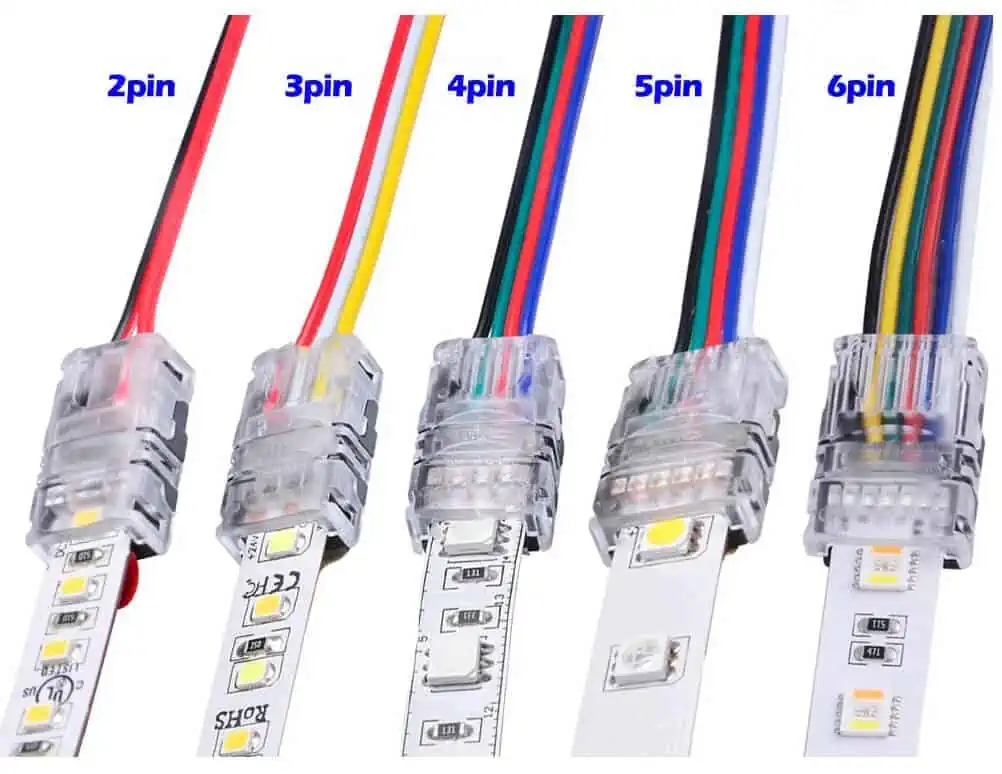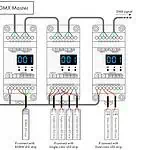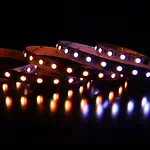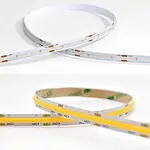Understanding HS codes is crucial if you are involved in the trading of LED products. These codes are necessary for classifying and recording merchandise for customs and other purposes. This post will go into the realm of HS codes, particularly for LED items, to help you manage international trade more effectively.
What Exactly are HS Codes?
System of Harmonization (HS)
HS codes, often known as Harmonized System codes, are a standard technique for classifying traded commodities. The World Customs Organization (WCO) designed this approach to simplify and streamline the international customs procedure. Nowadays, almost 200 nations and economies utilize the HS as the basis for their own categorization systems.
Significance of HS Codes
HS codes are essential for several reasons:
- They ensure that traded goods are correctly classified.
- They allow countries to collect and analyze trade data.
- They make trade talks and the implementation of preferential trade agreements easier.
- They help customs authorities determine import duties and taxes.
HS Codes for LED Products
Light Emitting Diodes (LEDs)
LEDs are semiconductor devices that emit light when passed by an electrical current. LED technology has become a popular choice for numerous lighting and display applications, including home and commercial lighting, automotive lighting, and digital signs, due to its energy economy and extended lifespan.
HS Codes for LED-related Products
As LED technology has advanced, the variety of LED-related items has expanded. In order to improve international commerce and customs processes, special HS codes have been allocated to a variety of LED items. In the sections that follow, we shall examine the HS codes for several kinds of LED goods.
HS Codes for LED Lighting Products
LED Lamps
LED bulbs and tubes are often utilized for household and business lighting. Compared to standard incandescent and fluorescent bulbs, they provide superior energy efficiency, longer life, and less environmental effect. The principal HS code for LED lighting is 8539.50.
LED Light Fixtures
LED light fixtures are intended to accommodate or incorporate LED bulbs. These fixtures include downlights, spotlights, and panel lights, among others. HS code 9405.40 describes LED lighting fixtures.
LED Modules
LED modules are miniature, pre-assembled components composed of one or more LED chips attached on a printed circuit board (PCB). They may be incorporated into a variety of lighting applications, including sign illumination, architectural lighting, and industrial lighting. LED modules have an HS code of 8541.40.
LED Strips & LED Neon Lights
LED strips, commonly referred to as LED tape or ribbon, are flexible, linear lighting solutions composed of numerous tiny LEDs put on a narrow, flexible circuit board. Often used for accent lighting, under-cabinet lighting, and ornamental applications, these strips may be trimmed to fit. LED strips have the HS code of 9405.40.
In contrast, LED neon lights are an energy-efficient alternative to conventional neon lighting. They employ flexible silicone tubes packed with LEDs, imitating the look of conventional neon tubes but providing improved durability, reduced energy usage, and easier installation. As they belong to the same category as other LED lighting items, the HS code for LED neon lights is likewise 9405.40.
HS Codes for LED Display Products
LED Display Panels
LED display panels, also known as LED screens or LED video walls, are utilized for a variety of indoor and outdoor display applications, such as advertising, event production, and sports arenas. These panels are made of multiple LED modules, resulting in a smooth, expansive display. LED display panels carry the HS code of 8528.59.
LED Display Accessories
LED display panels require accessories, such as control systems, power supply, and mounting structures, to perform well and be installed correctly. Several HS codes apply to these accessories, depending on their individual qualities and uses.
HS Codes for LED Components
LED Chips
LED chips are the central component of an LED and are responsible for light production. They come in a variety of sizes, colors, and strengths. LED chips have an HS code of 8541.40.
LED Drivers
LED drivers are electrical devices that manage the amount of electricity delivered to a single LED or an array of LEDs. They assure optimal performance, safeguard the LEDs from damage, and aid in maintaining a steady light output. 8504.40 is the HS code for LED drivers.
LED Profiles
LED profiles, often referred to as LED extrusions or channels, are aluminum housings intended to house LED strips, offering a clean and professional appearance while also assisting in heat dissipation. LED profiles include the HS code of 7604.29.

LED Connectors
LED connectors are crucial for making dependable connections between various LED components, including LED strips, modules, and power supplies. These connections are available in a variety of kinds and configurations, such as strip-to-strip connectors, strip-to-wire connectors, and waterproof connectors, assuring their compatibility with a variety of LED systems and installations. The HS code for LED connections is 8536.90, which is assigned to the larger category of electrical connectors. It is crucial to note that the precise HS code for LED connectors may vary based on their precise kind and attributes.
LED Wires
LED cables are necessary for transporting electrical power and signals between LED components such as LED chips, LED drivers, and LED control systems. These wires are available in a variety of gauges, materials, and insulation types to accommodate indoor, outdoor, and high-temperature LED applications. The HS code for LED wires normally comes within the 8544.42 classification for insulated electrical cables. Nevertheless, the precise HS code may vary based on the features of the wire, such as the material, insulation type, and voltage rating. It is essential to use the right HS code when classifying and documenting LED cables for customs and commerce reasons.
HS Code Reference Table for LED Products and Components
| Product Category | Description | HS Code |
| LED Lighting Products | ||
| LED Lamps | 85395100.00 | |
| LED Light Fixtures | 94051100.00 | |
| LED Modules | 85395100.00 | |
| LED Strips | 94054290.00 | |
| LED Neon Lights | 94054290.00 | |
| LED Display Products | ||
| LED Display Panels | 84239000.00 | |
| LED Display Accessories | Varies | |
| LED Components | ||
| LED Chips | 85414100.00 | |
| LED Drivers | 85044014.00 | |
| LED Profiles | 94059900.00 | |
| LED Connectors | 85444919.00 | |
| LED Wires | 85444211.00 |
Understanding the HS Code Structure
HS Code Breakdown
Each pair of digits in an HS code represents a certain degree of categorization.
The first two digits represent the chapter, which is a broad classification of products.
The following two digits reflect the chapter’s heading, a more narrow collection of items.
The last two numbers represent the subcategory, which provides further information about the product.

Finding the Correct HS Code
Use the official HS nomenclature or use an online HS code search tool to get the right HS code for an LED device. Also, consult your local customs authorities or a customs broker to guarantee proper categorization.
Importance of Accurate HS Codes for LED Products
Choosing the proper HS code is crucial for several reasons:
- It aids in avoiding delays or fines during customs clearance.
- It guarantees the right application of import duties and taxes.
- It provides for the proper collecting and analysis of trade data.
How to Stay Updated on HS Code Changes
Periodically, HS codes may be revised to reflect changes in the global trading scene. To remain current on these developments, subscribe to the WCO’s updates or follow the news from your local customs authority. In addition, collaborate closely with a customs broker to verify conformity with the most recent HS code regulations.
And you can check the website https://www.transcustoms.com/.
FAQs
The objective of HS codes is to standardize the classification of traded commodities, simplify customs processes, and facilitate international trade.
While the first six digits of HS codes are standardized and harmonized across participating nations, extra digits may be assigned by each nation to better identify the categorization of items. These extra digits are known as national subheadings.
Using obsolete HS codes, misclassifying items, or utilizing a broad HS code when a more particular code is available are common errors. To avoid these errors, review the most recent HS nomenclature, utilize HS code search tools, and confer with customs officials or brokers.
Absolutely, erroneous HS codes may result in customs clearance delays, fines, or penalties. In rare instances, improper categorization might result in the seizure of items.
Use the official HS nomenclature, use online HS code lookup tools, and consult your local customs authorities or a customs broker to verify appropriate categorization. Also, keep up of HS code system updates to ensure continuous compliance.
Absolutely, customs authorities utilize HS codes to establish the import duties and taxes applicable to a particular goods. It is essential to use the correct HS code to guarantee that the relevant duty and tax rates are applied.
HS codes are primarily used for customs clearance, but they also serve other functions, such as collecting trade data, monitoring regulated commodities, and executing trade agreements.
Every five years, the World Customs Organization (WCO) modifies the Harmonized System. Individual nations may, however, alter their national subheadings more regularly. It is crucial to be current on changes to HS codes and to check current information.
In many instances, the same HS code may encompass multiple LED devices with identical qualities. Yet, it is essential that the HS code appropriately reflects the goods being exchanged.
Keeping up of HS code changes ensures that your company complies with the most recent customs regulations, avoids penalties, and benefits from any changes to import tariffs or tax rates. Check the WCO and your local customs authority for changes on a regular basis, and work with a customs broker to maintain continuous compliance.
Conclusion
Knowing HS codes for LED items is essential for companies engaged in worldwide trading of these commodities. Understanding the HS codes for various LED items, their structure, and the significance of appropriate categorization can assist you in navigating customs processes and promote more efficient trade operations. Maintain awareness of HS code changes to guarantee continuing compliance and trade success.
LEDYi manufactures high-quality LED strips and LED neon flex. All of our products go through high-tech laboratories to ensure the utmost quality. Besides, we offer customizable options on our LED strips and neon flex. So, for premium LED strip and LED neon flex, contact LEDYi ASAP!



